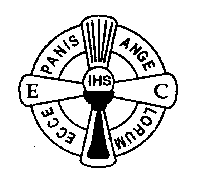Excerpts
From the Manual of the
Eucharistic Crusade of the Apostleship of Prayer
Published
in 1962 by the Central Office of the Eucharistic Crusade, Rome

Educating the Youth to Live the Mass
(slightly edited by Fr. Boulet)
A. EDUCATION FOR CORRECT PARTICIPATION IN THE MASS
3. Fuller Instruction on the Sacrifice of the Mass.
As the children grow older, they should receive fuller instruc≠tion on the Mass. The following should be noted:
a) Children must know the meaning and significance, the nature and importance of the Eucharist Sacrifice. There is no question of a scientific, theological explanation, but rather an explanation of what is happening at Mass, and of what is being signified by the chief ceremonies. For if the children - and the same applies to adults - clearly understand what is happening at Mass, then not only will they follow much more easily the different prayers but they can more readily take part in the Mass by their own meditation and by other prayers suited to the sacred action.
b) Children must learn how the Mass is the center and sum≠mary of Christian life. The end of all religious formation is that the faithful be more and more disposed to participate as perfectly as possible in the Eucharistic Sacrifice as offerers and victims. For this, it is necessary that they understand the sacrificial character of the Christian life and see how all the virtues which they exercise and all the truths which they believe finally lead to a more perfect union with the sacrifice of Christ. Therefore the explanation of the Mass is not just a special separate section of the catechism in which the mystery of the Eucharist is taught. Rather this explanation ought to penetrate the whole of catechetical teaching. For this, it must be explained to the children in a practical manner how they can refer everything to the Mass, and how they can, in a true sense, all "live the Mass".
c) That the Mass be understood in this way, the whole of Catholic doctrine (especially moral theology) must be correctly presented. It should not be given just as a list of regulations and sacrifices demanded.† Faith should be viewed as centered on the mystery of Christí life, whose imitation is the basic requirement to reach eternal happiness. Then appear the immensity of the gift of the Eucharistic Sacrifice, in which we can have a part as offerers and victims.
d) We must link this explanation of the nature and meaning of the Mass with an explanation of the ceremonies. This should be done carefully however lest the children lose the chief idea of sacrifice in the multitude of the rites. This explanation too should be given by degrees, first the chief ceremonies, then the secondary ones.
e) These explanations should not only instruct the children on the nature and ceremonies of the Mass but help them to take their part in the Sacrifice itself. This is demanded by the very nature of this Sacrifice. Those who are educated to take an active part in the Mass and who learn more and more to follow the sacred action, will come to develop an ever richer experimental knowledge of this Sacrifice.
Home | Contact
| Mass Centres | Schools
| Pilgrimages | Retreats
|
Precious Blood Residence
District Superior's
Ltrs | Superor General's
Ltrs | Various
Newsletter | Eucharistic
Crusade | Rosary Clarion | For
the Clergy | Coast to Coast |
Saints | Links